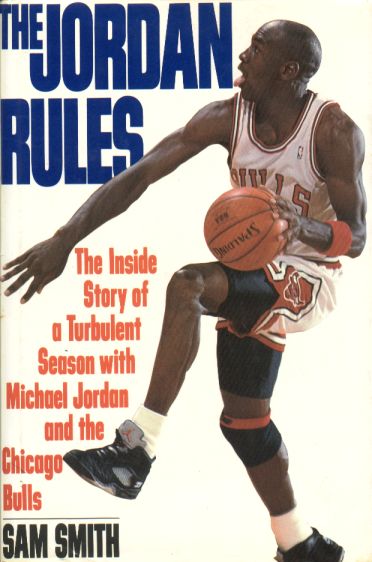By Sam Smith
![]()

![]()
Ranking: ![]()
![]()
![]()
![]()
![]()
What a difference 15 years makes! When this book came out, it was extremely controversial because it portrayed Michael Jordan in an unflattering light. I read part of it in 1992 and thought it was too much mudslinging for my tastes and I put it down. Back then, I bought Wheaties boxes with Jordan on it and thought he was extremely cool.
In 1998, I created my tongue-in-cheek anti-Jordan web page. By this time, I was not much of a fan of Jordan. I read another part of the book to use on the website and thought it was far rougher than even I was.
Now, in 2007, I read it again. This was long after the luster of Jordan had worn off. He was exposed as a bully, homophobe, and all-around jerk after his stint in Washington. His teammates were not in awe of his greatness and were happy to see him retire.
This time, I appreciated just how groundbreaking this book was. Smith wrote one an extremely important book. He exposed the other side of the product of Madison Avenue. It's not that Jordan was an evil person. He WAS a selfish, self-centered, elitist. He had abilities that others could only dream of. He could take on an opponent single-handedly unlike any guard in history. He had moves from another world. However, he could not understand how teammates of lesser abilities could not do the things he could. Therefore, he put it on his shoulders to try and win by himself. In addition, he wanted glory for himself. He once said he wanted to win, but he wanted to be the reason his team won. That selfishness and need for glory followed him throughout his career. As the 1991 playoffs wore on, Jordan began learning to trust his teammates, his coaches, and the Triangle offense. However, he still wanted the glory for himself, and this trait followed him throughout his career. Smith exposed this, and in the process, wrote a landmark sports book.
Beyond the importance of taking on Jordan, Smith's book chronicles the 1991 Chicago Bulls and how they rose to the ranks of NBA champions. He goes through the bumps in the road and the glories. He covers the players and their battles with each other, their camaraderie, their common hatred of management. In the midst of the storm is coach Phil Jackson, who struggles to take the Bulls to new heights while juggling the egos. He has to sell the team, and especially Jordan, on the Triangle offense. He wants more ball movement, while trying to convince Jordan that it won't take away from him. He needs Jordan to trust his teammates and sacrifice his game for the good of the team, while Jordan sees it as a way of de-Michaelizing the Bulls. He has to treat Jordan with special treatment, while keeping the team from resenting him too much for it. It is an intriguing story of leadership.
He also details players' battles with management over money -- namely, Scottie Pippen, Horace Grant, Cliff Levingston, Bill Cartwright, and John Paxson. Meanwhile, Jerry Krause is trying to sign European sensation Toni Kukoc without losing the rest of the team.
Cameron Stauth's The Franchise has always been the standard by which single-season books have been measured. This book in on that level. The Franchise shows you the inner workings from the front office. This book takes you inside the locker room, practice, and the airplane -- different sides of the same coin.
One final note: Smith isn't on a witch hunt against Jordan. He acknowledges his amazing ability, his killer instinct. He also shows how good he is with kids, and how he struggles with his fame. Unlike most reporters, he shows a 3-dimensional view of this complex superstar.
Introspection: 3
Insight: 5
History: 1990-91
Readability: 5
The Jordan Rules: The Inside Story of a Turbulent Season with Michael Jordan and the Chicago Bulls. Sam Smith. Simon & Schuster. 1992.